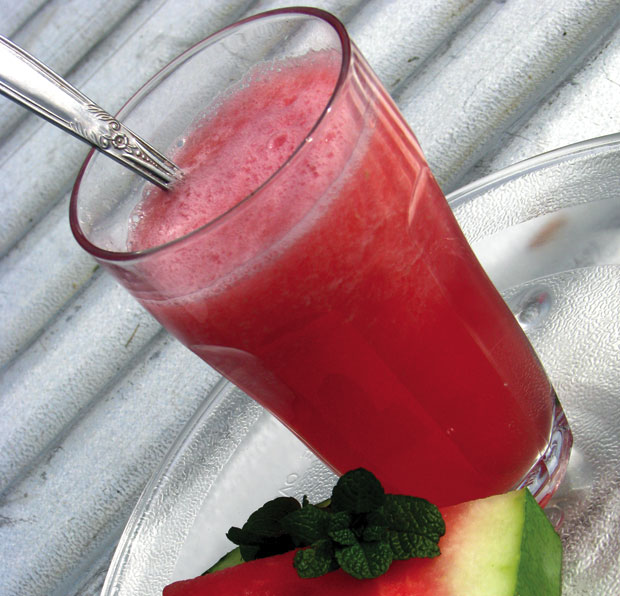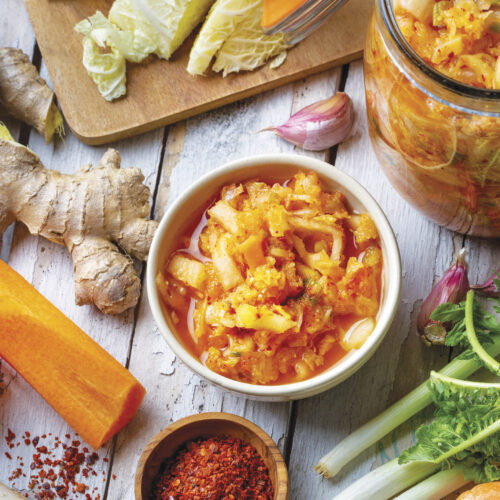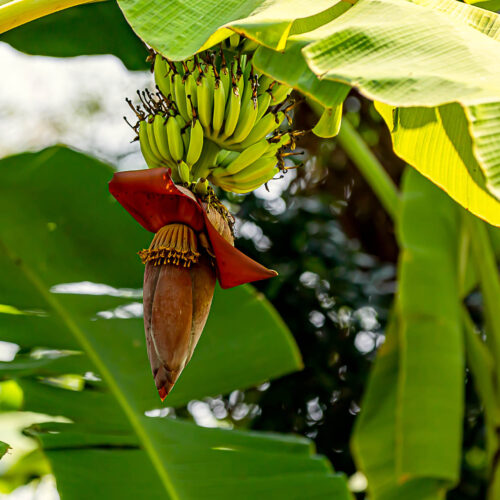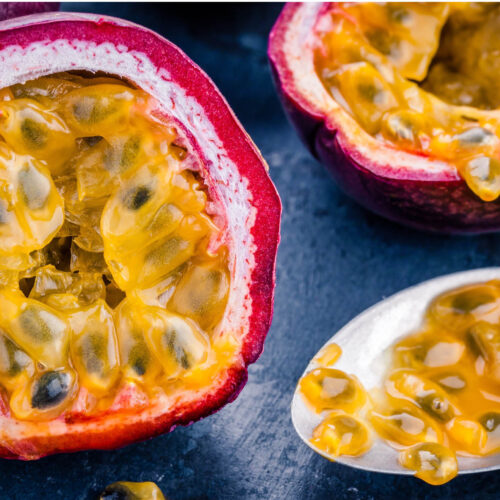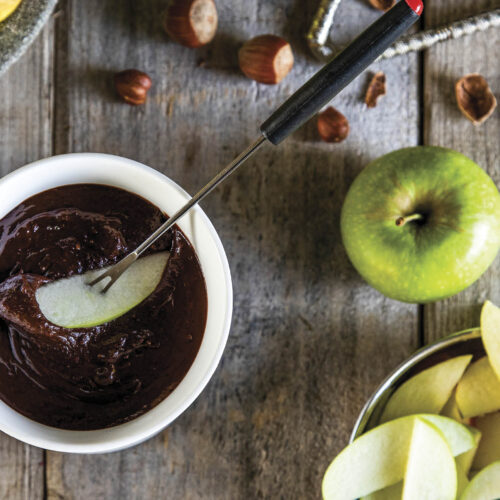Thirst-quenching gardens
2010-11-27T10:15:47+11:00
LINDA COCKBURN believes in not just growing her own food, but growing her own drinks as well. Here are her ideas for some delicious ‘drinks from the garden’ to enjoy.
I love that so many more people have been converted to growing their own food in recent years.
But I’d like to extend the thinking from ‘seed-to-plate’, to ‘seed-to-cup’, given that so many productive plants can be turned into tasty, thirst-quenching drinks, especially in spring and summer. These drinks are great for adults and kids alike, but creating interesting drinks for children is a particular winner.
Over the years I’ve aimed to provide our son Caleb with a fresh-food diet and have avoided added preservatives, colours and flavourings. It hasn’t always been easy, especially when many of his friends have packet lunches full of shiny wrappers, calories, dubious additives and little nutrition. For years we fought the good fight but now, years later, his friends look into his lunchbox and try to trade with him for fruit and home-cooked goodies.
So it wasn’t a big step to thinking about adding ‘home-grown’ to the drink bottle. Sky juice (as I’ve heard rainwater referred to) is great, but it’s nice to add flavours (and vitamins) from the garden to increase the rate at which it’s drunk. Here are some favourites to try.
Getting cordial
The main standby in any household with children – cordial – is one of the easiest drinks to make. And while it does use sugar, remember the ingredients below are for the concentrate and it will be diluted to about one-fifth strength.
As an adult, you may enjoy it with less sugar, or you could try alternative sweeteners, such as stevia (see ‘Stevia-sweetened drinks, opposite), agave nectar or brown rice syrup.
For years we’ve used the same basic recipe that can be adapted to use any in-season fruit, from temperate to tropical. We’ve made passionfruit, mandarin, lemon, strawberry, blackberry, blackcurrant, raspberry, elderflower berries and apple cordial. And because the temperature of the fruit is raised only minimally in the making, it retains much of its nutrient value.
Stevia-sweetened drinks
If you’re not keen on using sugar but have a sweet tooth, Stevia can be used as an alternative. Some commercial drinks makers use it as a sweetener. This South American bush’s main ingredient, steviosides, is far sweeter by weight than sugar cane, but contains no calories. The leaves have a sweet, slightly liquorice taste. Stevia powder is available from selected health food stores and online.
Stevia sweetener
Pick half-a-cup of fresh Stevia leaves and steep in 1½ cups of boiling water. Leave for an hour or so then strain and use the liquid to taste in teas, drinks and jellies.
Growing stevia
Stevia (Stevia rebaudiana) may be propagated by seed; however, seed is very difficult to find and germination rates are frustratingly low. Plants, too, are rare in Australia.
If you do find a supplier, Stevia needs diligent care, preferring a frost-free, temperate, coastal climate. Plant these low-growing shrubs in mounds or ridges, 15cm high, in well-composted soil, in a sheltered position with dappled all-day sunshine, or protection from afternoon sun. Mulch thinly and use drip irrigation. Wet soil, or standing containers in saucers, causes root decay.
Straight juices
There’s nothing difficult about making your own juice. Process the fruit of your choice in either a blender or a juicer. Anything goes, but a few of my favourite combinations include:
- Rockmelon with a hint of strawberry or peppermint
- Tomato and lime juice with a sprinkle of pepper
- Beetroot
- Ginger and apple for a liver boost.
Toss a few ice cubes in the blender for that extra cold kick in the heat of summer.
Flavoured ice
Fruit-flavoured ice-cubes not only enhance the flavour of straight water but look great too. Blended raspberries, mint leaves, orange juice – or whatever garden fruit glut you’ve got going – is a favourite with the kids, either frozen as cubes or as homemade ice-blocks. Stevia tea can be added to entice the sweetest of tooths.
Smoothies or Lassis
Smoothies are well known these days, but the traditional Indian yoghurt-based drink – lassi – is also worth trying. Smoothies are basically your favourite fruit blended with milk, whether soy, cow or other. For lassi, replace the milk with yoghurt. Don’t forget to look for organic yoghurt – or make your own. For a yummy lassi idea, see recipe, left.
Hint: To avoid mango messiness, cut the mango in half, avoiding the stone; with a knife, make horizontal and vertical cuts, taking care not to cut into the skin. Turn the skin inside out and scrape the cubes of flesh into the blender.
To make your own yoghurt at home, simply add 1 tbsp of natural yoghurt to 250ml of milk and shake until well blended. Leave in a warm spot for 24 hours, after which time it should be set enough to refrigerate. This process can only be repeated a few times as the bacteria numbers drop and a new batch of bought yoghurt needs to be used.
For the grown-ups
For the adults, it’s rewarding to utilise your garden produce to make homemade, low-alcohol drinks. No two batches are the same, meaning you can experiment with recipes to suit your taste. Ginger beer is a great idea, and there are plenty of recipes and instructions online for this. But a drink with a difference you might want to try is elderflower champagne.
Growing elderberry plants
My elderberry plant produced berries in the second year in Queensland, but here in Tasmania where growth rates are slower, after about the same length of time we’re still waiting. Quick-growing in warmer areas, elderberry plants can easily be propagated from hardwood cuttings taken when the bush is dormant. The plants prefer slightly acidic, moist (but not wet) soils, and as they are shallow-rooted require mulching or weed suppression while they are establishing. They respond well to fertiliser.
The berries can be used, but as the raw seeds contain poisonous cyanogenic glycosides they must be neutralised by cooking. All other parts – roots, leaves and stems – are poisonous and should never be consumed. The flowers are considered safe to consume.
Native elderberries
Native elderberries resemble exotic elderberry, and both flowers and fruits can be similarly used. Yellow elderberry, Sambucus australasica, has yellow fruits, while white elderberry, S. gaudichaudiana, has white berries.
In compost-rich, slightly acidic soil, and planted in a sheltered position with morning sunshine, these shrubs need regular watering during dry weather to fruit well. Old wood on all species of elderberry tends to be susceptible to borer attack, which kills individual stems. Pruning off affected stems to the ground stimulates replacement by suckers. Elderberries succeed best in coastal gardens in warm temperate or subtropical regions.

